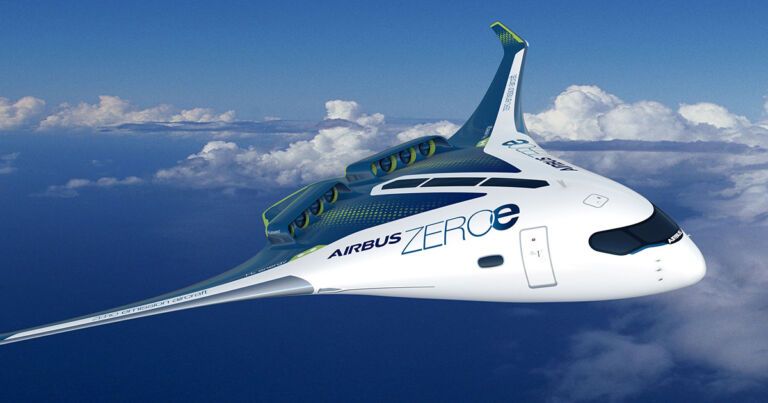As climate change mandates loom, a new breakthrough from NASA could offer a pathway to commercial nuclear fusion.



Researchers say cooling 13,000 years ago is coincident with major volcanic eruption.
Texas researchers from the University of Houston, Baylor University and Texas A&M University have discovered evidence for why the earth cooled dramatically 13,000 years ago, dropping temperatures by about 3 degrees Centigrade.
The evidence is buried in a Central Texas cave, where horizons of sediment have preserved unique geochemical signatures from ancient volcanic eruptions — signatures previously mistaken for extraterrestrial impacts, researchers say.
As earth becomes less habitable due to the climate emergency, The Astroland Agency are working out how humans could colonize Mars by 2035. Before the pandemic, we spent time with them to learn how that would work.
About VICE:
The Definitive Guide To Enlightening Information. From every corner of the planet, our immersive, caustic, ground-breaking and often bizarre stories have changed the way people think about culture, crime, art, parties, fashion, protest, the internet and other subjects that don’t even have names yet. Browse the growing library and discover corners of the world you never knew existed. Welcome to VICE.
Connect with VICE:
Check out our full video catalog: http://bit.ly/VICE-Videos
Videos, daily editorial and more: http://vice.com
More videos from the VICE network: https://www.fb.com/vicevideo
Like VICE on Facebook: http://fb.com/vice
Follow VICE on Twitter: http://twitter.com/vice
Follow us on Instagram: http://instagram.com/vice
The VICE YouTube Network:
VICE: https://www.youtube.com/VICE
MUNCHIES: https://www.youtube.com/MUNCHIES
VICE News: https://www.youtube.com/VICENews
VICELAND: https://www.youtube.com/VICELANDTV
Broadly: https://www.youtube.com/Broadly
Noisey: https://www.youtube.com/Noisey
Motherboard: https://www.youtube.com/MotherboardTV
VICE Sports: https://www.youtube.com/NOC
i-D: https://www.youtube.com/iDmagazine
Waypoint: https://www.youtube.com/Waypoint

At the south pole of Jupiter lurks a striking sight—even for a gas giant planet covered in colorful bands that sports a red spot larger than the earth. Down near the south pole of the planet, mostly hidden from the prying eyes of humans, is a collection of swirling storms arranged in an unusually geometric pattern.
Since they were first spotted by NASA’s Juno space probe in 2019, the storms have presented something of a mystery to scientists. The storms are analogous to hurricanes on Earth. However, on our planet, hurricanes do not gather themselves at the poles and twirl around each other in the shape of a pentagon or hexagon, as do Jupiter’s curious storms.
Now, a research team working in the lab of Andy Ingersoll, Caltech professor of planetary science, has discovered why Jupiter’s storms behave so strangely. They did so using math derived from a proof written by Lord Kelvin, a British mathematical physicist and engineer, nearly 150 years ago.

Introduction: In recent years a futurist aesthetic movement has emerged in response to renewed public concern for the environment and a seeming lack of reflection of that concern in much contemporary art and design. Deriving its name from similar aesthetic movements such as Cyberpunk and Steampunk, its roots lay in various eco/climate science fiction and Post-Industrial futurist literature and is considered ‘punk’ in the sense that it is reactionary, and in opposition, to both the naive corporate utopianism that dominated the 20th century and the dystopianism that emerged in its wake by the end of that century, persisting to the present. We now live in an era where pragmatism is a radical stance. Thus Solarpunk seeks to cultivate a positive, hopeful, vision of a future rooted in technologies and culture of sustainability, yet in the context of what it acknowledges will be dramatic changes in our way of life due to Global Warming and the environmental malfeasance of the past, the transition to a renewables-based infrastructure, and the collapse of Industrial Age paradigms. A culture that has weathered the dramatic disruptions coming with the end of the Industrial Age, taken its sometimes bitter lessons from that, and found a way forward.
What makes Solarpunk ‘punk’ is an underlying activist/revolutionary narrative it shares with the earlier punk movements tracing its origins to the narrative of one of Science Fiction’s earliest ‘antiheroes’; Captain Nemo of Jules Verne’s 20,000 Leagues Under The Sea. Long mischaracterized in film, the original character of Nemo is an Indian victim of European colonialism who is radicalized by the murder of his family by colonialists. He then appropriates and improves upon the technology of the colonialist powers not just to fight against them but to create a model egalitarian society of the future in the secret haven of the underwater underworld, beyond the reach of those colonial powers. Thus he becomes the prototype tech-hero, turning the oppressors/dominators technology against them and repurposing it for the benefit of the rest of society.

A third — the most out-there among the three — is designed to seat 200 passengers. The concept merges the wings with the main body, creating a massive open space. “The exceptionally wide fuselage opens up multiple options for hydrogen storage and distribution, and for cabin layout,” an Airbus statement reads.
Airbus is hoping to drum up excitement around the idea of powering the planes of tomorrow using hydrogen gas. “The transition to hydrogen, as the primary power source for these concept planes, will require decisive action from the entire aviation ecosystem,” Airbus CEO Guillaume Faury said in the statement.
“I strongly believe that the use of hydrogen — both in synthetic fuels and as a primary power source for commercial aircraft — has the potential to significantly reduce aviation’s climate impact,” he added.


Discovering chemical substances as possible chemical markers of life existence in Venus’s atmosphere via remote astronomical observations cannot be considered objective evidence of life existence on the planet, says Roscosmos Executive Director for Science and Advanced Programs Alexander Bloshenko. ‘Credible scientific data on that matter can be obtained only via contact explorations of the planet’s surface and atmosphere,’ he added.
Notably, the USSR was the only country to conduct regular explorations of Venus using on-planet stations. The first ever soft landing on another planet’s surface in the Solar system was performed in 1970 by the Venera-7 descent module. Several orbital missions and landings provided detailed data on the Venerian climate, soil and atmosphere composition. The Soviet Venera-13 spacecraft still holds the record as the longest active spacecraft on Venus remaining operational for 127 minutes.
A huge breakaway of the Soviet Union from its competitors in exploration of Venus contributed to the fact that USA called Venus a ‘Soviet planet’. Having recently analyzed the pictures of Venus captured by Soviet missions, scientists of the Russian Academy of Sciences claimed they discovered moving objects and even might be living. And it remains to be seen, whether these guesses are true.
Today, a program of complex exploration of Venus has been developed by Roscosmos in cooperation with the Russian Academy of Sciences. The program consists of several missions. Moreover, a decision was taken to implement the previously planned Venera-D mission including orbital and landing modules, as a national project without involving wide international cooperation. The complex explorations will also include soil and atmosphere samples, as well as exploring evolution processes on Venus that has purportedly suffered a climatic disaster connected with greenhouse effect that is much discussed on Earth today.

While the future of the clean energy proposal remains uncertain, the majority of Americans have been reading from the same page regarding what needs to be done: Dramatically cutting down the country’s reliance on fossil fuels over the next two decades is critical to lowering greenhouse gas (GHG) emissions and address climate change, with six in 10 U.S. adults saying they would favor policies with this energy goal. Thankfully, scientists have been researching alternative energy solutions like wind and solar power for decades, including lesser-known sources that may seem a little unusual or even downright ridiculous and unrealistic.
You can chalk up harvesting energy from blackholes to the latter category.
Fifty years ago, British mathematical physicist, Roger Penrose, proposed a seemingly absurd idea how an alien society (or future humans) could harvest energy from a rotating black hole by dropping an object just outside its sphere of influence also known as the ergosphere where it could gain negative energy. Since then, nobody has been able to verify the viability of this seemingly bizarre idea— that is until now.
Sign up for Policy Genius today: http://bit.ly/whatif-policygenius
Listen to our extended version of this episode on any podcasting platform: https://link.chtbl.com/type-ii-civilization
How cool would it be if we could one day regulate our atmosphere, control the climate and maybe even blast threatening asteroids into stardust? Well, to do those things would require A LOT of energy. Essentially, we’d have to be able to harness all the power from the Sun. According to the Kardashev scale that ranks planets according to their ability to harness the energy from their star and even their galaxy, that would make Earth a Type II civilization. What does that mean and how far away are we from achieving that level of uber energy capacity? You’ll have to tune in to find out as Peter and Richard welcome back Michio Kaku, physicist and science communicator extraordinaire to help us better understand “What If we became a type II civilization?”
Time codes:
0:00 What the episode is going to be about?
1:45 Are we a Type I civilization?
3:20 Who is Pr. Michio Kaku?
4:35 What is the Kardashev scale?
8:20 What does Type II mean?
9:45 How to expedite our evolution to advanced energy?
13:00 What if we were a Type II civilization?
15:50 Enjoy more from Pr. Kaku
18:20 Do you have life insurance?
20:50 Final thoughts
Can you translate this episode into another language? Add subtitles and we will link your YouTube channel in the description: https://www.youtube.com/timedtext_video?v=1JcDKNblGTs